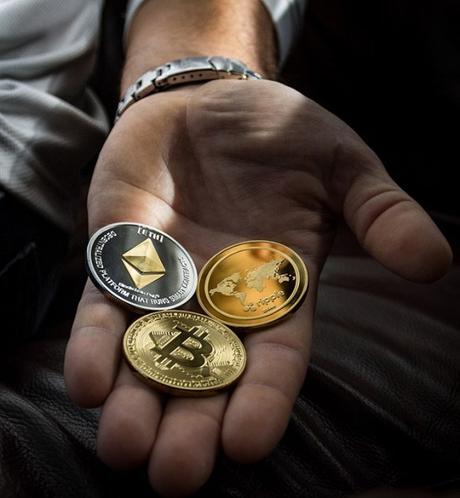The burgeoning relationship between cryptocurrency and the fashion industry continues to reach new heights, if recent developments are anything to go by. For cryptocurrency leaders, user adoption is a focal point. For fashion, crypto can expand design capability and allow mainstream businesses to connect to a fringe culture. Increasingly, the unlikely pairing seems to be a tailor-made match.


Crypto payments are already approaching something close to mainstream, even though they have a long way to go. For example, US payments fintech Flexa allows Whole Foods, Nordstrom, Starbucks, and many other Amazon-owned companies to accept bitcoins, the most popular cryptocurrency.
Trading in crypto equally appears to be blossoming. 2019 marked a recovery in bitcoin trading value, and rumors of increased commercial interest and potential approval in ETFs are signs of a bright future. If we're talking finance in fashion terms, cryptocurrency is firmly center-stage and the new trend - which will become a permanent staple.
Therefore, it comes as no surprise whatsoever that the two industries, whose relationship has flourished over the past few years, appear to have reached new heights in innovation, from transforming supply chains to supercharging personalization.
The online retail industry is expected to generate $3.46 trillion online in 2019, up from $2.93 trillion in 2018, according to forecasting from Internet Retailer. Sourcing those goods is a huge market. Many apparel and jewelry companies lack ethical supply chains, and crypto has begun the change that.
For example, Loomia is a New-York based technology company combining blockchain technologies with the textiles involved in the production of clothing. Blockchain has security embedded within and - crucially - transparency too. Loomia CEO, Janett Liriano explained; "This is an application of the blockchain that can seamlessly and securely connect consumers' digital identity to their physical counterparts." - bringing clarity and peace of mind to fashion supply chains.
LVMH, ConsenSys, and Microsoft announced, in May 2019, that they planned to collaboratively launch a blockchain-based platform called Aura. The objective is to ensure the traceability and authenticity of luxury products.
Fashion is an expression of personality, so personalization has always been highly valued in the industry. Greater customization is essentially the force behind much of finance and fashion's evolution in recent times. This digital tailoring has also seen growing traction amongst some of the biggest names in clothing.
Nike has recently issued its patent for blockchain-compatible sneakers - they call it "CryptoKicks" - a system where blockchain could attach digital assets to the shoes themselves. The patent explains: "When a consumer buys a genuine pair of shoes a digital representation of a shoe may be generated, linked with the consumer, and assigned a cryptographic token, where the digital shoe and cryptographic token collectively represent a 'CryptoKick.'" - effectively, allowing digital tracing of ownership and hybrid customizations.

In a similar vein, digital fashion pioneers The Fabricant, are creating digital clothing by harnessing 2D garment pattern-cutting software and 3D design software, producing hyper-real, unique digital attire - a growing trend known as "crypto-collectibles".
These interest in using blockchain technologies and making use of cryptocurrencies payments is less surprising when we consider the basics of cryptocurrency and blockchain. Using blockchain technology, cryptocurrencies are built to be easily spendable, usable, and tradeable - and essentially uncrackable, thanks to in-built cryptography that validates every transaction. That universal 'tradeability' is a reason the crypto market has continued to recover downturns and grow in size; particularly as institutional interest has increased. This means a larger volume of transactions and increased liquidity - no wonder fashion brands are capitalizing.
Cryptocurrencies were built to break away from the mainstream, and allow people to control their money the way they chose with transparency and security. In the words of fashion icon, Gianni Versace; "Don't make fashion own you, but you decide what you are, what you want to express by the way you dress, and the way you live."
As time goes on, we can expect to see cryptocurrencies and blockchain applications to continue enriching fashion, therefore helping people express themselves, build new things, and live the way they choose.
Fraquoh and Franchomme
Further reading:
Blockchain: The New Fashion Trend Fashion and CryptocurrenciesP.S. We want to hear from you! What do you think of the complex relation between fashion and blockchain? How do you think this technology will revolutionize the industry? Why? Share your feedback, questions or thoughts in the comments below! For more articles on style, fashion tips and cultural insights, you can subscribe to Attire Club via e-mail or follow us on Facebook, Twitter or Instagram!

